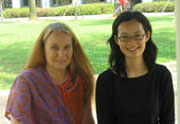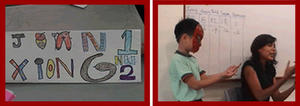Why Singapore’s English Teachers Should Embrace Singlish, Not Fight It
Is it time for Singaporean educators to embrace Singlish as a legitimate learning tool? What the Research […]
Read More
The arts encompass essential components of education for the 21st century because they offer multiple ways for students to perceive and understand the world. Various forms of representations are embedded in our daily lives through the artistic domains (e.g., music, dance and the visual arts), which engage meaningful relationships between different cognitive and emotional processes.
The project Creativity: Representational Praxis in Artistic Domains was conceptualized to examine various artistic practices in selected Singaporean classrooms at three levels – Preschool, Primary and Secondary. Our case study project, which began in August 2004, has focused on students’ multimodal meaning-making, particularly in the visual arts, music and movement (that is, the use of visual, spatial, aural, musical and bodily-kinesthetic modes of expression). The emphasis on students’ representations has led to an understanding of both the teachers’ and students’ outlook on the arts and the creative practices that have been undertaken in Singaporean classrooms.

Through an ethnographical approach, over 30 observations were made in these schools to probe the meaning of creativity from the perspectives of students, educators, parents and community members. In addition, an arts coding system was conceived to decipher the modalities of representational praxis within and across different arts media, and this has been implemented in the observations that were carried out in schools.
These observations focused on three key aspects of arts pedagogy:
We also collected student artifacts, teacher documentation and school brochures and documents to develop an overview of arts practice in the schools, and interviewed teachers about what they saw as the challenges, constraints, goals and opportunities for arts pedagogy and practice. In addition, interviews with students and parents helped us get a picture of their likes/dislikes about education in the arts, and their interest, expectations and participation in the arts in and outside of school.
The project is now complete, and we are aiming to move into a new phase next year. Although the analysis of the data and the writing up of the results are still in progress, some preliminary findings are reported here.

| Student: | We really put in a lot of effort, a lot of time. | |
| Student: | We even come back specially on Mondays to practise. | |
| Student: | Extra. | |
| Student: | Yah, extra. Saturdays. | |
| Student: | Three days…four days a week. We come back four days a week. | |
| Student: | And the Secondary 3s, two and a half hours every day. Not every day. | |
| Student: | Every session. | |
| Student: | Yah, every session. Quite intensive. | |
| Interviewer: | Was there any feedback given back to you on the competition? | |
| Student: | The vice principal wrote on my report card that we’ve done well. |
| [?] | ||
| Interviewer: | Do you think you learned anything from the whole long period of practising for the SYF competition? | |
| Students: | Of course. | |
| Student: | Confidence. | |
| Interviewer: | Confidence? Anything else? | |
| Student: | Work together. ‘Cos we always have conflicts and fights, and quarrel. | |
| Student: | Encouragement. SYF. The teacher. Choreographer. |
The current findings are both interesting and promising. The extension of this current project in the development of the arts in Singaporean schools is both exciting and valuable.
Acknowledgements
Henderson Secondary School, Hua Min Primary School, CHIJ, Clementi Primary School, Katong Primary School, Shepherd Educare and St. James Preschool.